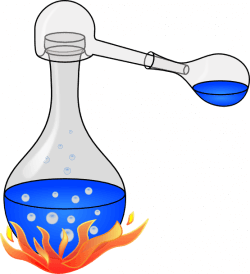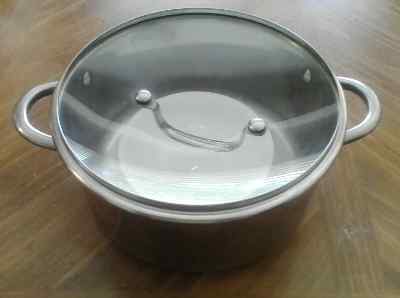Distillation:When Boiling Is Not Enough
Distillation is a great method to turn dirty water into clean pure drinking water. Distillation is the process of boiling off a liquid and then collecting the liquid again after it condenses. The condensing usually takes place in a tube of some sort.
There are a number of methods people use to get clean drinking water in a survival situation. Filtering, boiling and distilling are a few examples and each has its advantages and disadvantages. When you should choose distillation will depend on your situation.
 Filtration is relatively fast, but does a poor job of cleaning out bacteria. Boiling does a great job controlling bacteria but does nothing for the taste or removing many chemical toxins.
Filtration is relatively fast, but does a poor job of cleaning out bacteria. Boiling does a great job controlling bacteria but does nothing for the taste or removing many chemical toxins.
Distillation is used when you have to deal with saltwater, dirty water and sometimes even chemically contaminated water.
Be mindful that distillation does not guarantee you 100% pure drinking water. In some cases you can actually concentrate the chemicals in the distilled product. This scenario happens when the source water is contaminated with a chemical that has a boiling point the same or a bit lower than water.
Those chemical toxins will simply condense in your distiller just like the water vapor.
Distillation of saltwater is a survival situation where distillation shines the most. But it is also perfectly fine when dealing with water in an unpolluted environment where muddy water can be collected from puddles, streams and rivers.
Building a distillation device can be easy and can be made from natural materials although most people will choose modern materials if available.
Distiller A:Moonshine Unit
The moonshine distiller has three major components. A boiling vessel. A condensing section. And a collecting section.
The boiling vessel ideally would be a glass container with a narrow exit, such as a typical glass jug of some sort. It could also be made of clay pottery or a metal such as a tea kettle.
You can learn how to make glass, clay potteryand metalobjects all on from scratch right here on Survival-Manual.com.
The condensing section of the distillation unit can be as simple as a tube of pottery made from clay. If you have it though, glass or copper tubing is preferred. It is preferred only because it transfers the heat away faster and allows a shorter condensing section and or a more efficient process. But just be creative. Bamboo, switch cane, or even rolled up leaves can be used.
Be aware that the condensing section must have a downward slope to a collection container and not be sloped back toward the boiling container.
And you guessed it. The last component is the collection container. Most any clean container can be used. Glasses, pots, depressions in a stone or a even a leaf. Just situate it so that as the condensate from the condensing section drains, it drain / drips into your collection container.
To put your distillation unit in use all you must do is fill the boiling container partially with dirty water. Light a fire under it or add heat to it somehow like a Fresnel lens or whatever you can dream up. That is it start collection.
Having an air tight connection between the boiling unit and the condensing unit is preferred but certainly not required. Some glue, clay or other materials can be added to help seal the connection and improve the efficiency of your distiller.
 Distiller B:Stove Top Unit
Distiller B:Stove Top Unit
The stove top distiller is an even simpler method. You simply place a pot inside another pot. The only significant requirement being that the lid of the larger pot should be lowest in the center. Most people accomplish this by simply turning the lid to the large put upside down.
Now place the dirty water in the large pot, then set the smaller pot inside the larger pot. Heat the water with fire or sun and try to cool the top of the lid with either air or dirty water that you can ladle in and out. During the winter adding ice works great!
The water will evaporate from the heat, then condense on the cooler lid and drip into the smaller pot.
The more heat you add the faster the unit works. However, you really don't need a fast boil as that could cause the loss of steam as the pressure builds and the lid actually lifts off of the pot to allow the steam to escape.
There are a number of methods people use to get clean drinking water in a survival situation. Filtering, boiling and distilling are a few examples and each has its advantages and disadvantages. When you should choose distillation will depend on your situation.

Distillation is used when you have to deal with saltwater, dirty water and sometimes even chemically contaminated water.
Be mindful that distillation does not guarantee you 100% pure drinking water. In some cases you can actually concentrate the chemicals in the distilled product. This scenario happens when the source water is contaminated with a chemical that has a boiling point the same or a bit lower than water.
Those chemical toxins will simply condense in your distiller just like the water vapor.
Distillation of saltwater is a survival situation where distillation shines the most. But it is also perfectly fine when dealing with water in an unpolluted environment where muddy water can be collected from puddles, streams and rivers.
Building a distillation device can be easy and can be made from natural materials although most people will choose modern materials if available.
Distiller A:Moonshine Unit
The moonshine distiller has three major components. A boiling vessel. A condensing section. And a collecting section.
You can learn how to make glass, clay potteryand metalobjects all on from scratch right here on Survival-Manual.com.
The condensing section of the distillation unit can be as simple as a tube of pottery made from clay. If you have it though, glass or copper tubing is preferred. It is preferred only because it transfers the heat away faster and allows a shorter condensing section and or a more efficient process. But just be creative. Bamboo, switch cane, or even rolled up leaves can be used.
Be aware that the condensing section must have a downward slope to a collection container and not be sloped back toward the boiling container.
And you guessed it. The last component is the collection container. Most any clean container can be used. Glasses, pots, depressions in a stone or a even a leaf. Just situate it so that as the condensate from the condensing section drains, it drain / drips into your collection container.
To put your distillation unit in use all you must do is fill the boiling container partially with dirty water. Light a fire under it or add heat to it somehow like a Fresnel lens or whatever you can dream up. That is it start collection.
Having an air tight connection between the boiling unit and the condensing unit is preferred but certainly not required. Some glue, clay or other materials can be added to help seal the connection and improve the efficiency of your distiller.
 Distiller B:Stove Top Unit
Distiller B:Stove Top UnitThe stove top distiller is an even simpler method. You simply place a pot inside another pot. The only significant requirement being that the lid of the larger pot should be lowest in the center. Most people accomplish this by simply turning the lid to the large put upside down.
Now place the dirty water in the large pot, then set the smaller pot inside the larger pot. Heat the water with fire or sun and try to cool the top of the lid with either air or dirty water that you can ladle in and out. During the winter adding ice works great!
The water will evaporate from the heat, then condense on the cooler lid and drip into the smaller pot.
The more heat you add the faster the unit works. However, you really don't need a fast boil as that could cause the loss of steam as the pressure builds and the lid actually lifts off of the pot to allow the steam to escape.
